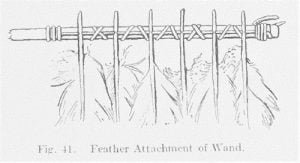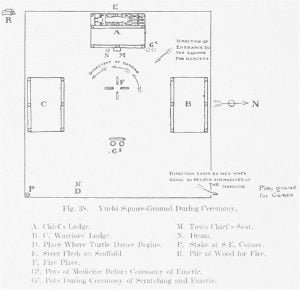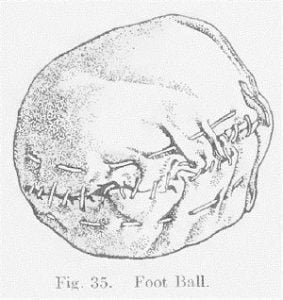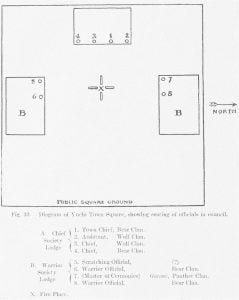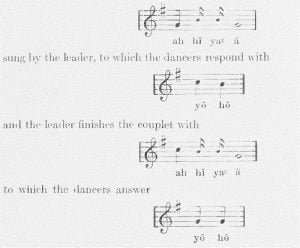Yuchi Decorative Art and Symbolism
Something has already been said about decorative designs in the description of clothing, but the designs themselves and the general subject of art deserve a little attention. As regards the artistic expression of this tribe it seems that, in general, special conventional decorations symbolizing concrete objects are confined to a few articles of clothing such as neckbands, sashes, hair ornaments, leggings and carrying-pouches. The whole field is permeated with a strong religious significance. Decorations of a like sort with a still more emphatic religious meaning are found on pottery, though rarely, as well as on other objects. Besides this we … Read more




